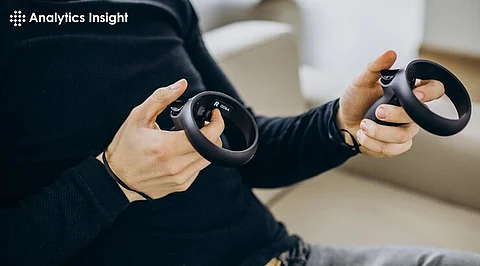

As the gaming industry continues to evolve, the focus has shifted from just visual fidelity and immersive worlds to creating more interactive and physically engaging experiences. Enter the next-gen motion controllers, which are revolutionizing the way we play games.
These advanced peripherals are designed to immerse players deeper into the virtual world by translating their physical movements into digital actions. With the latest improvements in motion sensing, feedback mechanisms, and ergonomic designs, these controllers promise to take gaming experiences to unprecedented levels of immersion.
With motion-sensing hardware such as the Wii's original Remote, PlayStation Move, and Xbox Kinect, motion controllers are not new to the gaming domain or experience. The emergence of such next-gen gaming consoles as the PlayStation 5 or Xbox Series X, as well as leading-edge VR platforms, has greatly transformed the evolution of the motion controller. All of these new controllers support advanced haptic feedback and adaptive triggers and track movements with precision to give the player a completely realistic connection between bodily action and in-game character responses.
1. Precision Motion Tracking is one of the most significant improvements in next-gen motion controllers is the enhancement of motion tracking technology. Advanced sensors, which include miniaturized accelerometers, gyroscopes, and infrared cameras, will allow for tracking the most subtle, natural movements with extremely high accuracy by the next generation of motion controllers.
2. Haptic feedback is another feature of next-generation motion controllers. An interface whose configuration leads to forming texture, resistance, or impact simulation between the surface of the skin and some other control element. For example, players may feel the vibrations of a character’s footsteps on different surfaces or the strain of pulling a bowstring tight before releasing an arrow.
3. Wireless Connections mean no more tangles or limitations in mobility. Next-gen motion controllers eliminate wired joins by using advanced wireless technology to match the console or even VR headset such that both of them form a seamless motion with lag-free reaction times. Thanks to Bluetooth, low-latency connections, and a dependable battery, players get to enjoy playing without any interruptions during gaming.
1. PlayStation VR2 Sense Controllers: The PlayStation VR2 initiates a new journey in virtual reality, and the Sense controllers have indeed left their mark as something exceptional.
2. Oculus Touch Controllers: Next-gen Touch controllers are bundled with the Oculus Quest Pro and feature improvements in ergonomics, tracking, and haptics for even better immersion, added onto an already-fan favorite accessory for the Oculus Quest 2.
3. Valve Index Controllers: Valve's Index controllers push the envelope on motion sensing and haptic feedback. They exceed general terms on motion sensing and haptic feedback because you can easily simulate gestures and interface with the virtual environment.
4. Xbox Series X/S Controllers (With Motion Add-ons): While Xbox's primary focus is on traditional controllers, players can enhance their experience with add-on motion accessories
Next-generation motion controllers are paving the way for a new dimension in immersive gaming. By introducing state-of-the-art motion tracking, haptic feedback, adaptive triggers, and ergonomics, they all redefine how players engage with their preferred games. Next-generation motion controllers promise to give much more in terms of experience. As the technology continues to improve, we can only expect motion controls to play an even bigger role in the future of gaming.
